1. Barnard CN. The operation. A human cardiac transplant: an interim report of a successful operation performed at Groote Schuur Hospital, Cape Town. S Afr Med J. 1967; 41:1271–1274. PMID:
4170370.
2. Reitz BA, Bieber CP, Raney AA, et al. Orthotopic heart and combined heart and lung transplantation with cyclosporin-A immune suppression. Transplant Proc. 1981; 13:393–396. PMID:
6791329.
3. Lund LH, Khush KK, Cherikh WS, et al. The registry of the International Society for Heart and Lung Transplantation: thirty-fourth Adult Heart Transplantation Report - 2017; focus theme: allograft ischemic time. J Heart Lung Transplant. 2017; 36:1037–1046. PMID:
28779893.
4. Krittayaphong R, Ariyachaipanich A. Heart transplant in Asia. Heart Fail Clin. 2015; 11:563–572. PMID:
26462096.
5. Wang SS, Chu SH, Ko WJ. Clinical outcome of heart transplantation: experience at the National Taiwan University Hospital. Transplant Proc. 1996; 28:1733–1734. PMID:
8658861.
6. Chawalit O, Meunmai S, Kittichai L, et al. The first successful heart transplantation in South East Asia. Rinsho Kyobu Geka. 1988; 8:480–483. PMID:
9301873.
7. Jung SH, Kim JJ, Choo SJ, Yun TJ, Chung CH, Lee JW. Long-term mortality in adult orthotopic heart transplant recipients. J Korean Med Sci. 2011; 26:599–603. PMID:
21532848.
8. Youn JC, Han S, Ryu KH. Temporal trends of hospitalized patients with heart failure in Korea. Korean Circ J. 2017; 47:16–24. PMID:
28154584.
9. Ng AK, Jim MH, Yip GW, Ng PY, Fan K. Long term survival and prevalence of cardiac allograft vasculopathy in Chinese adults after heart transplantation - a retrospective study in Hong Kong. Int J Cardiol. 2016; 220:787–788. PMID:
27394975.
10. Fukushima N, Ono M, Saiki Y, Sawa Y, Nunoda S, Isobe M. Registry report on heart transplantation in Japan (June 2016). Circ J. 2017; 81:298–303. PMID:
28070058.
11. Lee KF, Lin CY, Tsai YT, et al. The status of heart transplantation in Taiwan, 2005–2010. Transplant Proc. 2014; 46:934–936. PMID:
24767384.
12. Lee HY, Oh BH. Heart transplantation in Asia. Circ J. 2017; 81:617–621. PMID:
28413189.
13. Smits JM, de Vries E, De Pauw M, et al. Is it time for a cardiac allocation score? First results from the Eurotransplant pilot study on a survival benefit-based heart allocation. J Heart Lung Transplant. 2013; 32:873–880. PMID:
23628111.
14. Davies RR, Farr M, Silvestry S, et al. The new United States heart allocation policy: progress through collaborative revision. J Heart Lung Transplant. 2017; 36:595–596. PMID:
28396089.
15. Kittleson MM. Changing role of heart transplantation. Heart Fail Clin. 2016; 12:411–421. PMID:
27371517.
16. Colvin-Adams M, Valapour M, Hertz M, et al. Lung and heart allocation in the United States. Am J Transplant. 2012; 12:3213–3234. PMID:
22974276.
17. Nwakanma LU, Williams JA, Weiss ES, Russell SD, Baumgartner WA, Conte JV. Influence of pretransplant panel-reactive antibody on outcomes in 8,160 heart transplant recipients in recent era. Ann Thorac Surg. 2007; 84:1556–1562. PMID:
17954062.
18. Meyer DM, Rogers JG, Edwards LB, et al. The future direction of the adult heart allocation system in the United States. Am J Transplant. 2015; 15:44–54. PMID:
25534445.
19. Kobashigawa JA, Johnson M, Rogers J, et al. Report from a forum on US heart allocation policy. Am J Transplant. 2015; 15:55–63. PMID:
25534656.
20. Kobashigawa J, Zuckermann A, Macdonald P, et al. Report from a consensus conference on primary graft dysfunction after cardiac transplantation. J Heart Lung Transplant. 2014; 33:327–340. PMID:
24661451.
21. Kobashigawa J, Mehra M, West L, et al. Report from a consensus conference on the sensitized patient awaiting heart transplantation. J Heart Lung Transplant. 2009; 28:213–225. PMID:
19285611.
22. Kobashigawa J, Crespo-Leiro MG, Ensminger SM, et al. Report from a consensus conference on antibody-mediated rejection in heart transplantation. J Heart Lung Transplant. 2011; 30:252–269. PMID:
21300295.
23. Lee HY, Jeon ES, Kang SM, Kim JJ. Initial report of the Korean Organ Transplant Registry (KOTRY): heart transplantation. Korean Circ J. 2017; 47:868–876. PMID:
29035428.
24. Kim IC, Youn JC. Understanding the current status of Korean heart transplantation based on initial KOTRY report. Korean Circ J. 2017; 47:858–860. PMID:
29192425.
25. Mehra MR, Canter CE, Hannan MM, et al. The 2016 International Society for Heart Lung Transplantation listing criteria for heart transplantation: a 10-year update. J Heart Lung Transplant. 2016; 35:1–23. PMID:
26776864.
26. Yancy CW, Jessup M, Bozkurt B, et al. 2013 ACCF/AHA guideline for the management of heart failure: a report of the American College of Cardiology Foundation/American Heart Association Task Force on Practice Guidelines. J Am Coll Cardiol. 2013; 62:e147–e239. PMID:
23747642.
27. Ponikowski P, Voors AA, Anker SD, et al. 2016 ESC guidelines for the diagnosis and treatment of acute and chronic heart failure: the task force for the diagnosis and treatment of acute and chronic heart failure of the European Society of Cardiology (ESC) Developed with the special contribution of the Heart Failure Association (HFA) of the ESC. Eur Heart J. 2016; 37:2129–2200. PMID:
27206819.
28. Yancy CW, Jessup M, Bozkurt B, et al. 2017 ACC/AHA/HFSA focused update of the 2013 ACCF/AHA guideline for the management of heart failure: a report of the American College of Cardiology/American Heart Association Task Force on Clinical Practice Guidelines and the Heart Failure Society of America. J Am Coll Cardiol. 2017; 70:776–803. PMID:
28461007.
29. Kim MS, Lee JH, Kim EJ, et al. Korean guidelines for diagnosis and management of chronic heart failure. Korean Circ J. 2017; 47:555–643. PMID:
28955381.
30. Bardy GH, Lee KL, Mark DB, et al. Amiodarone or an implantable cardioverter-defibrillator for congestive heart failure. N Engl J Med. 2005; 352:225–237. PMID:
15659722.
31. Cleland JG, Daubert JC, Erdmann E, et al. The effect of cardiac resynchronization on morbidity and mortality in heart failure. N Engl J Med. 2005; 352:1539–1549. PMID:
15753115.
32. Velazquez EJ, Lee KL, Jones RH, et al. Coronary-artery bypass surgery in patients with ischemic cardiomyopathy. N Engl J Med. 2016; 374:1511–1520. PMID:
27040723.
33. Goldenberg I, Kutyifa V, Klein HU, et al. Survival with cardiac-resynchronization therapy in mild heart failure. N Engl J Med. 2014; 370:1694–1701. PMID:
24678999.
34. Kittleson MM, Patel JK, Kobashigawa JA. Chapter 72: cardiac transplantation. In : Fuster V, Harrington RA, Narula J, Eapen ZJ, editors. Hurst's the Heart. 14th ed. New York (NY): McGraw-Hill;2017.
35. Huprikar S, Danziger-Isakov L, Ahn J, et al. Solid organ transplantation from hepatitis B virus-positive donors: consensus guidelines for recipient management. Am J Transplant. 2015; 15:1162–1172. PMID:
25707744.
36. Shin HS, Cho HJ, Jeon ES, et al. The impact of hepatitis B on heart transplantation: 19 years of national experience in Korea. Ann Transplant. 2014; 19:182–187. PMID:
24759334.
37. Feld JJ, Jacobson IM, Hézode C, et al. Sofosbuvir and velpatasvir for HCV genotype 1, 2, 4, 5, and 6 infection. N Engl J Med. 2015; 373:2599–2607. PMID:
26571066.
38. Khush KK, Zaroff JG, Nguyen J, Menza R, Goldstein BA. National decline in donor heart utilization with regional variability: 1995–2010. Am J Transplant. 2015; 15:642–649. PMID:
25676093.
39. Kobashigawa J, Khush K, Colvin M, et al. Report from the American Society of Transplantation conference on donor heart selection in adult cardiac transplantation in the United States. Am J Transplant. 2017; 17:2559–2566. PMID:
28510318.
40. Zaroff JG, Rosengard BR, Armstrong WF, et al. Consensus conference report: maximizing use of organs recovered from the cadaver donor: cardiac recommendations, March 28–29, 2001, Crystal City, Va. Circulation. 2002; 106:836–841. PMID:
12176957.
41. Dhital KK, Iyer A, Connellan M, et al. Adult heart transplantation with distant procurement and
ex-vivo preservation of donor hearts after circulatory death: a case series. Lancet. 2015; 385:2585–2591. PMID:
25888085.
42. Ardehali A, Esmailian F, Deng M, PROCEED II trial investigators, et al. Ex-vivo perfusion of donor hearts for human heart transplantation (PROCEED II): a prospective, open-label, multicentre, randomised non-inferiority trial. Lancet. 2015; 385:2577–2584. PMID:
25888086.
43. Kobashigawa J. Clinical Guide to Heart Transplantation. Los Angeles (CA): Springer;2017.
44. Awad M, Czer LS, Hou M, et al. Early denervation and later reinnervation of the heart following cardiac transplantation: a review. J Am Heart Assoc. 2016; 5:e004070. PMID:
27802930.
45. Russo MJ, Iribarne A, Hong KN, et al. Factors associated with primary graft failure after heart transplantation. Transplantation. 2010; 90:444–450. PMID:
20622755.
46. Russo MJ, Chen JM, Sorabella RA, et al. The effect of ischemic time on survival after heart transplantation varies by donor age: an analysis of the United Network for Organ Sharing database. J Thorac Cardiovasc Surg. 2007; 133:554–559. PMID:
17258599.
47. Briasoulis A, Inampudi C, Pala M, Asleh R, Alvarez P, Bhama J. Induction immunosuppressive therapy in cardiac transplantation: a systematic review and meta-analysis. Heart Fail Rev. 2018.
48. Grimm M, Rinaldi M, Yonan NA, et al. Superior prevention of acute rejection by tacrolimus vs. cyclosporine in heart transplant recipients--a large European trial. Am J Transplant. 2006; 6:1387–1397. PMID:
16686762.
49. Kobashigawa JA, Miller LW, Russell SD, Study Investigators, et al. Tacrolimus with mycophenolate mofetil (MMF) or sirolimus vs. cyclosporine with MMF in cardiac transplant patients: 1-year report. Am J Transplant. 2006; 6:1377–1386. PMID:
16686761.
50. Taylor DO, Barr ML, Radovancevic B, et al. A randomized, multicenter comparison of tacrolimus and cyclosporine immunosuppressive regimens in cardiac transplantation: decreased hyperlipidemia and hypertension with tacrolimus. J Heart Lung Transplant. 1999; 18:336–345. PMID:
10226898.
51. Ye F, Ying-Bin X, Yu-Guo W, Hetzer R. Tacrolimus versus cyclosporine microemulsion for heart transplant recipients: a meta-analysis. J Heart Lung Transplant. 2009; 28:58–66. PMID:
19134532.
52. Kobashigawa J, Miller L, Renlund D, et al. A randomized active-controlled trial of mycophenolate mofetil in heart transplant recipients. Transplantation. 1998; 66:507–515. PMID:
9734496.
53. Kobashigawa JA, Renlund DG, Gerosa G, et al. Similar efficacy and safety of enteric-coated mycophenolate sodium (EC-MPS, myfortic) compared with mycophenolate mofetil (MMF) in
de novo heart transplant recipients: results of a 12-month, single-blind, randomized, parallel-group, multicenter study. J Heart Lung Transplant. 2006; 25:935–941. PMID:
16890114.
54. Eisen HJ, Tuzcu EM, Dorent R, et al. Everolimus for the prevention of allograft rejection and vasculopathy in cardiac-transplant recipients. N Engl J Med. 2003; 349:847–858. PMID:
12944570.
55. Keogh A, Richardson M, Ruygrok P, et al. Sirolimus in
de novo heart transplant recipients reduces acute rejection and prevents coronary artery disease at 2 years: a randomized clinical trial. Circulation. 2004; 110:2694–2700. PMID:
15262845.
56. Eisen HJ, Kobashigawa J, Starling RC, et al. Everolimus versus mycophenolate mofetil in heart transplantation: a randomized, multicenter trial. Am J Transplant. 2013; 13:1203–1216. PMID:
23433101.
57. Kobashigawa JA, Pauly DF, Starling RC, A2310 IVUS Substudy Investigators, et al. Cardiac allograft vasculopathy by intravascular ultrasound in heart transplant patients: substudy from the Everolimus versus mycophenolate mofetil randomized, multicenter trial. JACC Heart Fail. 2013; 1:389–399. PMID:
24621971.
58. Mancini D, Pinney S, Burkhoff D, et al. Use of rapamycin slows progression of cardiac transplantation vasculopathy. Circulation. 2003; 108:48–53. PMID:
12742978.
59. Cabezón S, Lage E, Hinojosa R, Ordóñez A, Campos A. Sirolimus improves renal function in cardiac transplantation. Transplant Proc. 2005; 37:1546–1547. PMID:
15866668.
60. Bestetti R, Theodoropoulos TA, Burdmann EA, Filho MA, Cordeiro JA, Villafanha D. Switch from calcineurin inhibitors to sirolimus-induced renal recovery in heart transplant recipients in the midterm follow-up. Transplantation. 2006; 81:692–696. PMID:
16534470.
61. Kuppahally S, Al-Khaldi A, Weisshaar D, et al. Wound healing complications with
de novo sirolimus versus mycophenolate mofetil-based regimen in cardiac transplant recipients. Am J Transplant. 2006; 6:986–992. PMID:
16611334.
62. Kobashigawa J, Ross H, Bara C, et al. Everolimus is associated with a reduced incidence of cytomegalovirus infection following
de novo cardiac transplantation. Transpl Infect Dis. 2013; 15:150–162. PMID:
23013440.
63. Andreassen AK, Andersson B, Gustafsson F, et al. Everolimus initiation and early calcineurin inhibitor withdrawal in heart transplant recipients: a randomized trial. Am J Transplant. 2014; 14:1828–1838. PMID:
25041227.
64. Kim IC, Oh J, Lee CJ, Kim JY, Youn YN, Kang SM. Bioptome perforation at superior vena cava anastomosis site in transplanted heart. Korean Circ J. 2017; 47:538–539. PMID:
28765750.
65. Weber BN, Kobashigawa JA, Givertz MM. Evolving areas in heart transplantation. JACC Heart Fail. 2017; 5:869–878. PMID:
29191294.
66. Costanzo MR, Dipchand A, Starling R, et al. The International Society of Heart and Lung Transplantation guidelines for the care of heart transplant recipients. J Heart Lung Transplant. 2010; 29:914–956. PMID:
20643330.
67. Deng MC, Eisen HJ, Mehra MR, et al. Noninvasive discrimination of rejection in cardiac allograft recipients using gene expression profiling. Am J Transplant. 2006; 6:150–160. PMID:
16433769.
68. Pham MX, Teuteberg JJ, Kfoury AG, et al. Gene-expression profiling for rejection surveillance after cardiac transplantation. N Engl J Med. 2010; 362:1890–1900. PMID:
20413602.
69. Kobashigawa J, Patel J, Azarbal B, et al. Randomized pilot trial of gene expression profiling versus heart biopsy in the first year after heart transplant: early invasive monitoring attenuation through gene expression trial. Circ Heart Fail. 2015; 8:557–564. PMID:
25697852.
70. Stewart S, Winters GL, Fishbein MC, et al. Revision of the 1990 working formulation for the standardization of nomenclature in the diagnosis of heart rejection. J Heart Lung Transplant. 2005; 24:1710–1720. PMID:
16297770.
71. Colvin MM, Cook JL, Chang P, et al. Antibody-mediated rejection in cardiac transplantation: emerging knowledge in diagnosis and management: a scientific statement from the American Heart Association. Circulation. 2015; 131:1608–1639. PMID:
25838326.
72. Berry GJ, Burke MM, Andersen C, et al. The 2013 International Society for Heart and Lung Transplantation Working Formulation for the standardization of nomenclature in the pathologic diagnosis of antibody-mediated rejection in heart transplantation. J Heart Lung Transplant. 2013; 32:1147–1162. PMID:
24263017.
73. Tambur AR, Pamboukian SV, Costanzo MR, et al. The presence of HLA-directed antibodies after heart transplantation is associated with poor allograft outcome. Transplantation. 2005; 80:1019–1025. PMID:
16278580.
74. Coutance G, Ouldamar S, Rouvier P, et al. Late antibody-mediated rejection after heart transplantation: mortality, graft function, and fulminant cardiac allograft vasculopathy. J Heart Lung Transplant. 2015; 34:1050–1057. PMID:
25956740.
75. Kobashigawa JA, Stevenson LW, Moriguchi JD, et al. Is intravenous glucocorticoid therapy better than an oral regimen for asymptomatic cardiac rejection? A randomized trial. J Am Coll Cardiol. 1993; 21:1142–1144. PMID:
8459068.
76. Kobashigawa JA, Tobis JM, Starling RC, et al. Multicenter intravascular ultrasound validation study among heart transplant recipients: outcomes after five years. J Am Coll Cardiol. 2005; 45:1532–1537. PMID:
15862430.
77. Kobashigawa JA, Katznelson S, Laks H, et al. Effect of pravastatin on outcomes after cardiac transplantation. N Engl J Med. 1995; 333:621–627. PMID:
7637722.
78. Youn JC, Nahm JH, Kang SM. Duodenal cancer after cardiac transplantation? Heart. 2013; 99:1304. PMID:
23697657.
79. Kim SH, Ha YE, Youn JC, et al. Fatal scedosporiosis in multiple solid organ allografts transmitted from a nearly-drowned donor. Am J Transplant. 2015; 15:833–840. PMID:
25639881.
80. Kobashigawa JA, Kiyosaki KK, Patel JK, et al. Benefit of immune monitoring in heart transplant patients using ATP production in activated lymphocytes. J Heart Lung Transplant. 2010; 29:504–508. PMID:
20133166.
81. Schaffer SA, Husain S, Delgado DH, Kavanaugh L, Ross HJ. Impact of adjuvanted H1N1 vaccine on cell-mediated rejection in heart transplant recipients. Am J Transplant. 2011; 11:2751–2754. PMID:
21906258.
82. Dantal J, Soulillou JP. Immunosuppressive drugs and the risk of cancer after organ transplantation. N Engl J Med. 2005; 352:1371–1373. PMID:
15800234.
83. Stallone G, Schena A, Infante B, et al. Sirolimus for Kaposi's sarcoma in renal-transplant recipients. N Engl J Med. 2005; 352:1317–1323. PMID:
15800227.
84. Salgo R, Gossmann J, Schöfer H, et al. Switch to a sirolimus-based immunosuppression in long-term renal transplant recipients: reduced rate of (pre-)malignancies and nonmelanoma skin cancer in a prospective, randomized, assessor-blinded, controlled clinical trial. Am J Transplant. 2010; 10:1385–1393. PMID:
20121752.
85. Youn JC, Stehlik J, Wilk AR, et al. Temporal trends of
de novo malignancy development after heart transplantation. J Am Coll Cardiol. 2018; 71:40–49. PMID:
29301626.
86. Williams K, Mansh M, Chin-Hong P, Singer J, Arron ST. Voriconazole-associated cutaneous malignancy: a literature review on photocarcinogenesis in organ transplant recipients. Clin Infect Dis. 2014; 58:997–1002. PMID:
24363331.
87. Opelz G, Henderson R. Incidence of non-Hodgkin lymphoma in kidney and heart transplant recipients. Lancet. 1993; 342:1514–1516. PMID:
7902900.
88. Swinnen LJ, Costanzo-Nordin MR, Fisher SG, et al. Increased incidence of lymphoproliferative disorder after immunosuppression with the monoclonal antibody OKT3 in cardiac-transplant recipients. N Engl J Med. 1990; 323:1723–1728. PMID:
2100991.
89. Taylor AJ, Vaddadi G, Pfluger H, et al. Diagnostic performance of multisequential cardiac magnetic resonance imaging in acute cardiac allograft rejection. Eur J Heart Fail. 2010; 12:45–51. PMID:
20023044.
90. Butler CR, Savu A, Bakal JA, et al. Correlation of cardiovascular magnetic resonance imaging findings and endomyocardial biopsy results in patients undergoing screening for heart transplant rejection. J Heart Lung Transplant. 2015; 34:643–650. PMID:
25934478.
91. Lo YM, Tein MS, Pang CC, Yeung CK, Tong KL, Hjelm NM. Presence of donor-specific DNA in plasma of kidney and liver-transplant recipients. Lancet. 1998; 351:1329–1330. PMID:
9643800.
92. Beck J, Oellerich M, Schulz U, et al. Donor-derived cell-free DNA is a novel universal biomarker for allograft rejection in solid organ transplantation. Transplant Proc. 2015; 47:2400–2403. PMID:
26518940.
93. De Vlaminck I, Valantine HA, Snyder TM, et al. Circulating cell-free DNA enables noninvasive diagnosis of heart transplant rejection. Sci Transl Med. 2014; 6:241ra77.
94. Fehr T, Sykes M. Clinical experience with mixed chimerism to induce transplantation tolerance. Transpl Int. 2008; 21:1118–1135. PMID:
18954364.
95. Leventhal JR, Elliott MJ, Yolcu ES, et al. Immune reconstitution/immunocompetence in recipients of kidney plus hematopoietic stem/facilitating cell transplants. Transplantation. 2015; 99:288–298. PMID:
25594553.
96. Stehlik J, Kobashigawa J, Hunt SA, Reichenspurner H, Kirklin JK. Honoring 50 years of clinical heart transplantation in
Circulation: in-depth state-of-the-art review. Circulation. 2018; 137:71–87. PMID:
29279339.
97. Murthy R, Bajona P, Bhama JK, Cooper DK. Heart xenotransplantation: historical background, experimental progress, and clinical prospects. Ann Thorac Surg. 2016; 101:1605–1613. PMID:
26785937.
98. Kobashigawa JA. The future of heart transplantation. Am J Transplant. 2012; 12:2875–2891. PMID:
22900830.
99. Ekser B, Li P, Cooper DK. Xenotransplantation: past, present, and future. Curr Opin Organ Transplant. 2017; 22:513–521. PMID:
28901971.



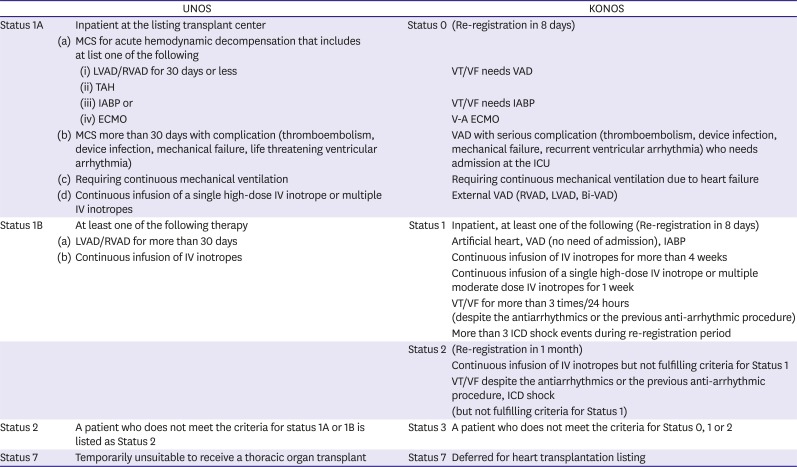
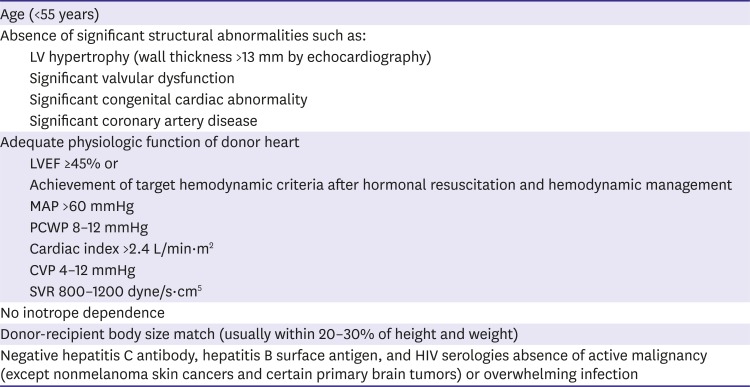
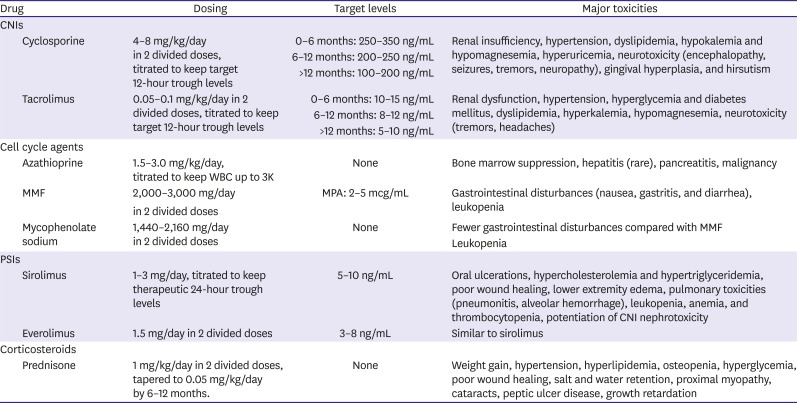







 PDF
PDF ePub
ePub Citation
Citation Print
Print



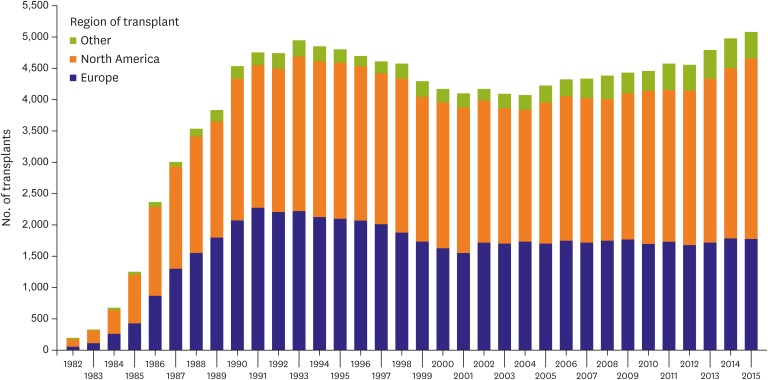
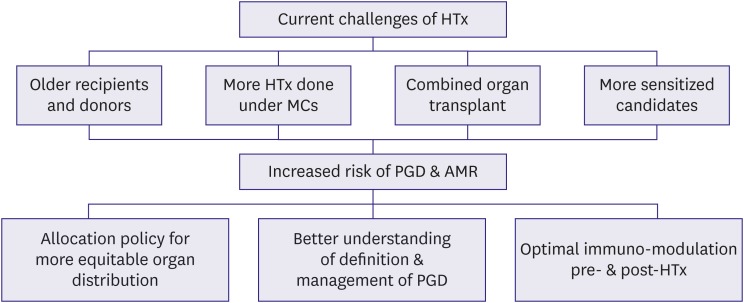
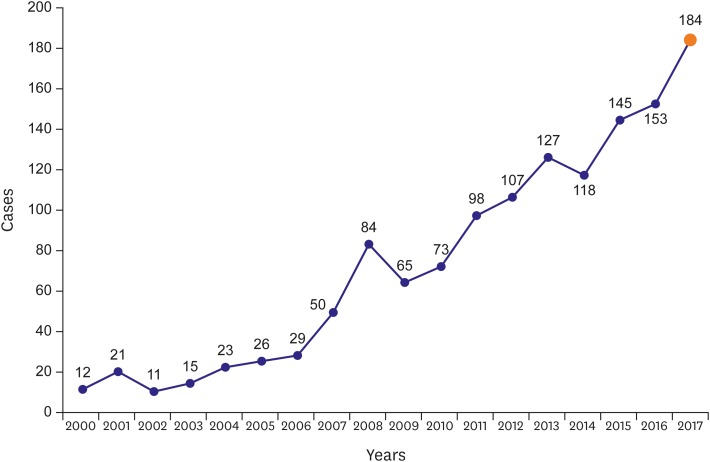
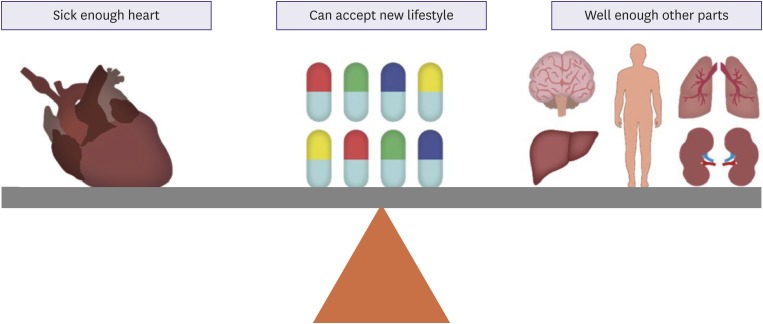
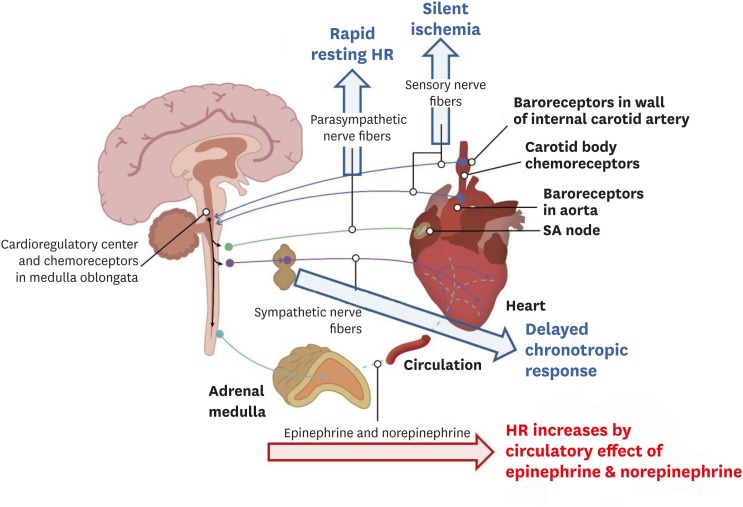
 XML Download
XML Download